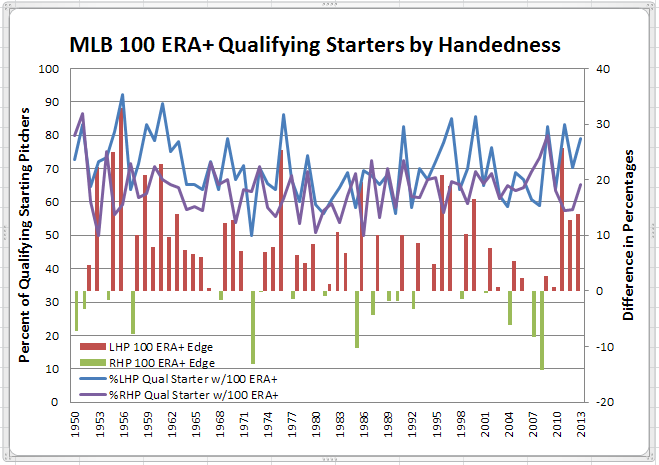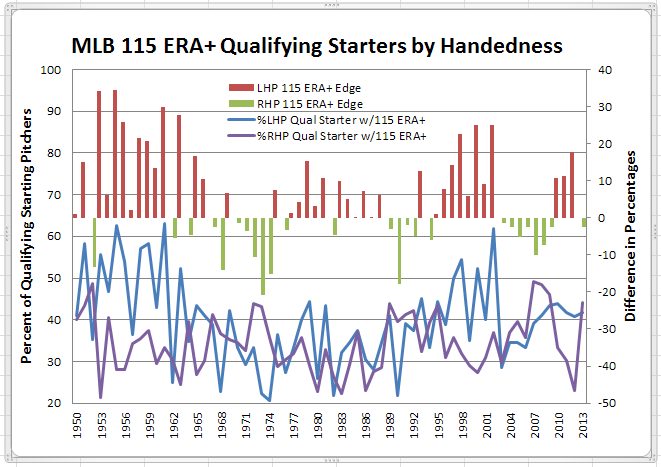After a lengthy period in the wilderness, lefties are once again in vogue in the majors. The chart below shows the difference in ERA for left-handed and right-handed pitchers. When lefties have the edge, the bar is brown and for righties the bar is green. 2013 was the 6th straight season that left-handers have outshone righties in ERA, albeit by small margins. Perhaps in consequence, innings for left-handed pitchers (the blue line) are also on the rise.
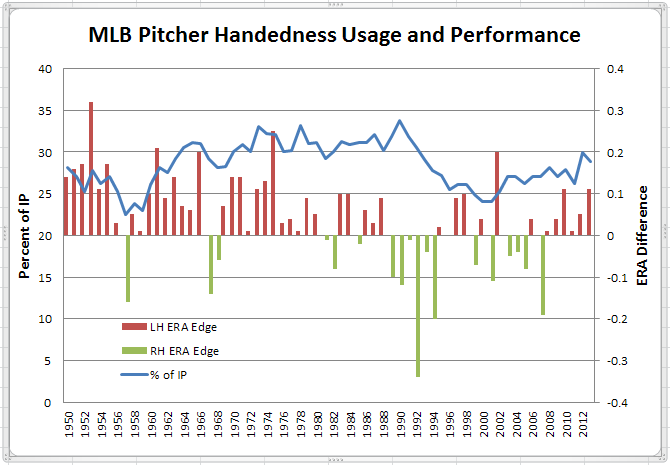
More on the change in southpaw fortunes after the jump.
As is evident from the above, lefties have (at least since 1950) produced superior ERA results to right-handers, with the exception of the 1988-2007 period when right-handers held the upper hand. For the most part, usage of left-handers in terms of proportion of innings pitched has followed their changing fortunes pretty closely.
Breaking down the data a bit further, the source of the left-handers’ advantage comes into view. Here are the same data, but only for plate appearances when the pitcher has the platoon advantage.
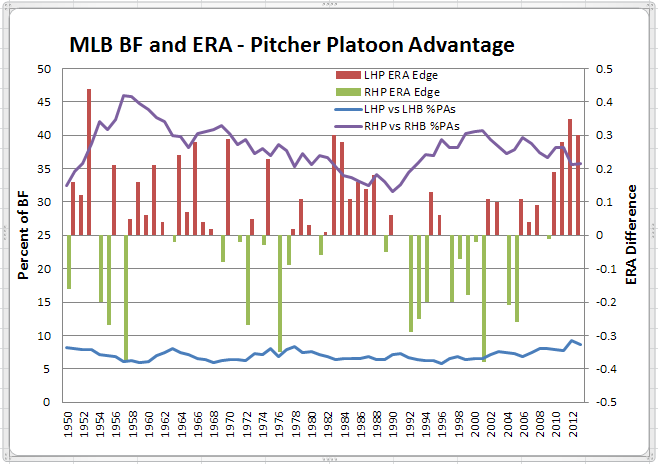
So, mainly following the same basic trend as for overall data, but with more significant differences in ERA. Of note is the decrease in RHP vs. RHB matchups (mid-1950s to late-1980s) coinciding with left-handed ERA dominance, and then the following increase in RHP vs. RHB matchups coinciding with the period when right-handers enjoyed an ERA edge. For the most recent period, RHP vs. RHB matchups have started to trend down again while LHP vs. LHB matchups are on the rise, the latter due partly to increased use of situational, left-handed relief pitching.
But look what happens when the batter has the platoon advantage.
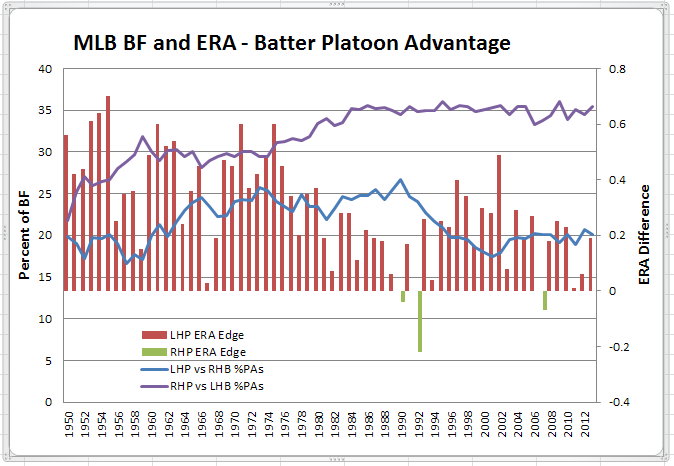
Lefties clearly have the upper hand on righties when facing a platoon disadvantage, though the magnitude of that ERA edge has declined since the 1970s, likely as a result of the advent of modern relief pitching practices. It is worth noting though that from the 1950s to the mid-1960s, managers were increasingly employing strategies to increase opportunities for batter platoon advantage from both sides of the plate. That left-handed pitchers evidently coped better with that challenge than right-handers is reflected in the following mid-1960s to mid-1980s period when the focus on increasing batting platoon advantage was mainly for left-handed batters.
Since the mid-1980s, the platoon strategy has shifted focus from the offense to the defense by reducing the instances when pitchers face a platoon disadvantage. But, only for left-handed pitchers. That practice has reduced the ERA edge that left-handers have historically enjoyed over right-handers, but one wonders whether a better result might have been obtained by also trying to reduce instances when right-handers face a platoon disadvantage. Instead, those RHP vs LHB matchups have remained unchanged at historic maximums for the past 30 years.
Delving further, let’s zero in on starting pitchers as their innings pitched represent the bulk of the effect seen in the preceding charts. The chart below shows the percentage of innings pitched by left-handers as bars, with the two lines representing the percentage of qualifying starters with 100 ERA+ that are left-handed, as well as the percentage of qualifying starters with ERA+ below 100 that are left-handed.
For the most part, left-handers comprise a larger proportion of the better pitchers than of the lesser pitchers. Further, the proportion of better pitchers who are left-handed is generally higher than the proportion of innings pitched by left-handers. This result is logically consistent with the earlier charts showing left-handed pitchers out-performing right-handed pitchers in most seasons.
Focusing in on the better starting pitchers with qualifying ERA+ of 100 or more provides this view.
The two lines show the percentage of left-handed qualifying starters with an ERA+ of 100 or more, and the percentage of right-handed qualifying starters with an ERA+ of 100 or more. Generally, there is a larger proportion of left-handed starters who are better pitchers than of right-handed starters. To make that more evident, I’ve shown the difference between those percentages as bars. Thus, the brown bars show when the left-handed proportion is higher and the green bars when the right-handed proportion is higher.
Finally, let’s focus on the very best pitchers. For that group, I’m looking at qualifying starters with an ERA+ of 115 or more. The same chart as above, just using 115 ERA+ instead of 100 ERA+.
A bit more encouraging for right-handers, but only a bit.


